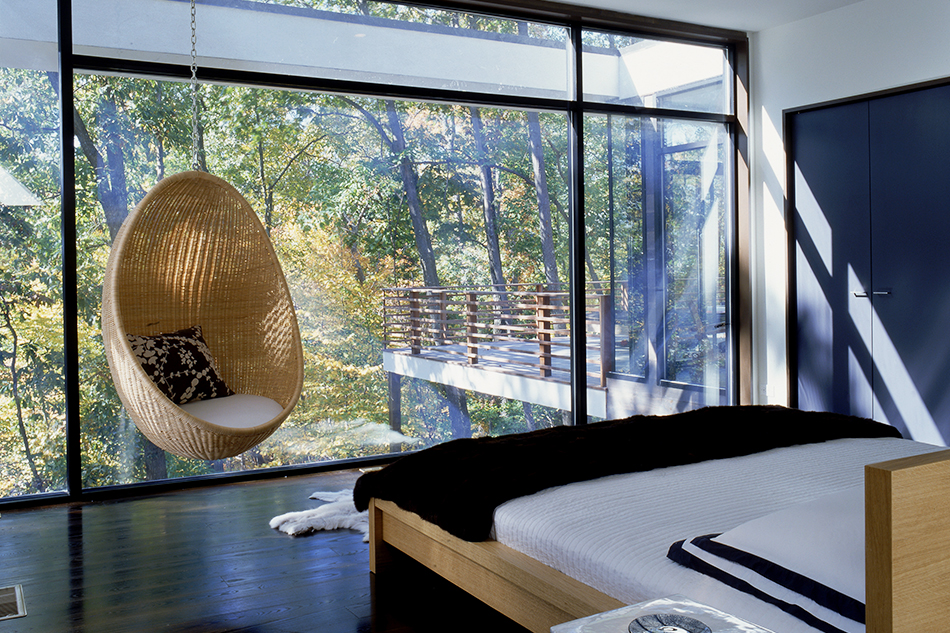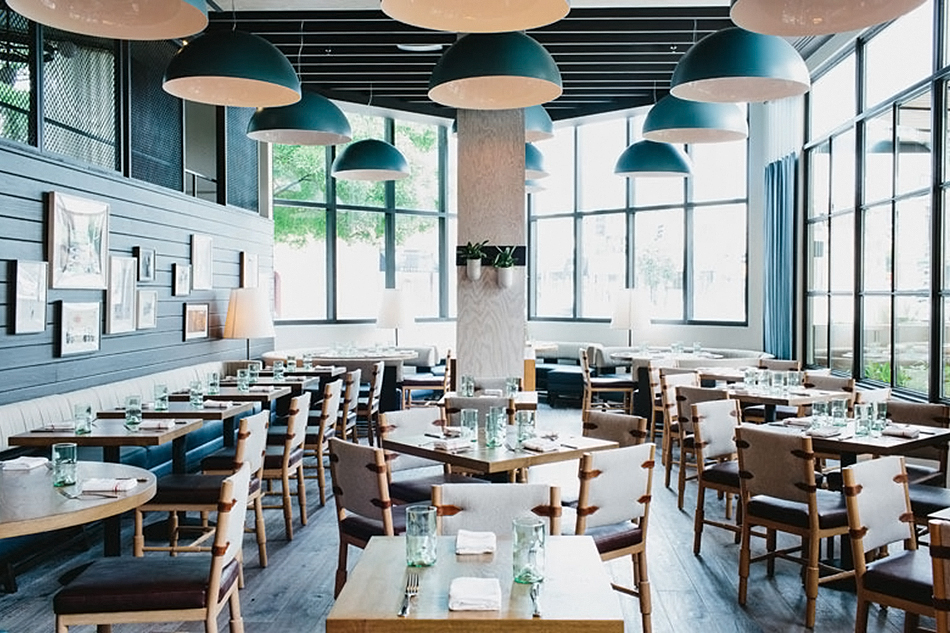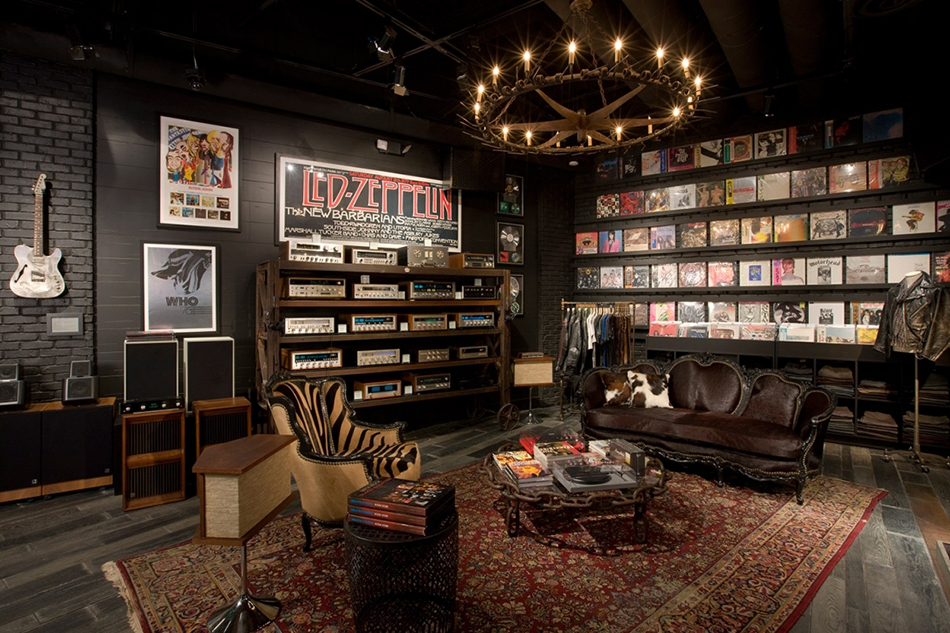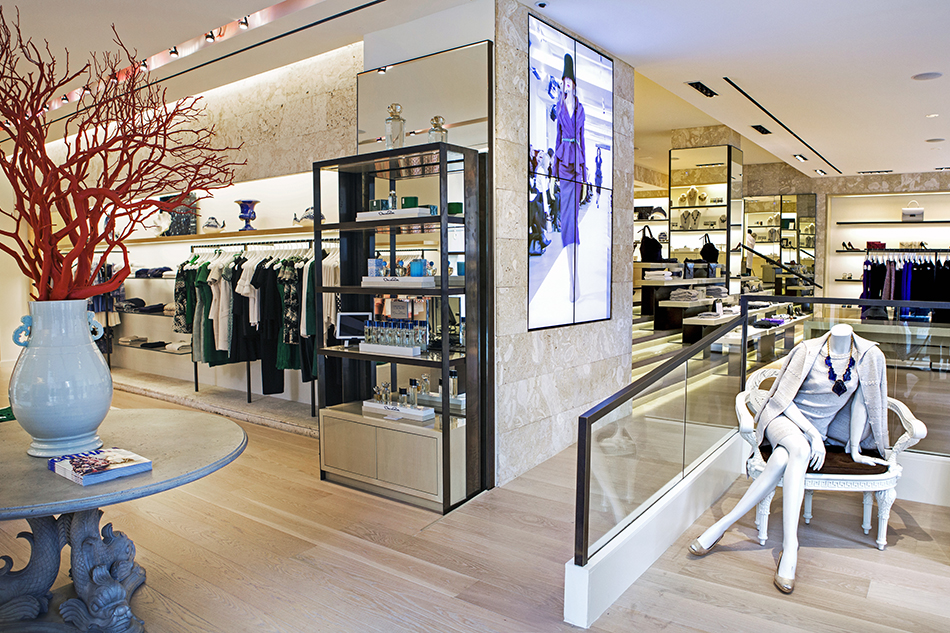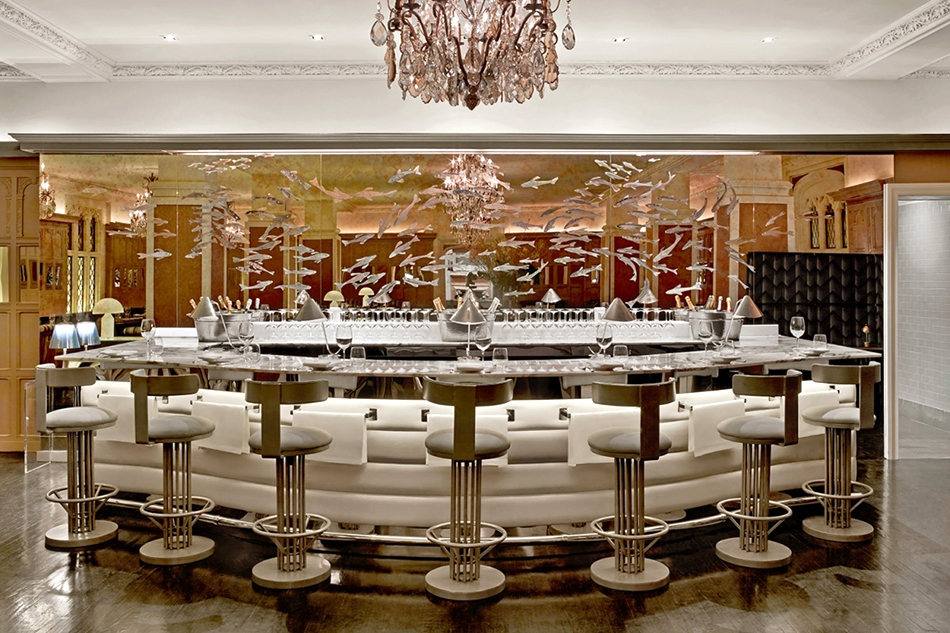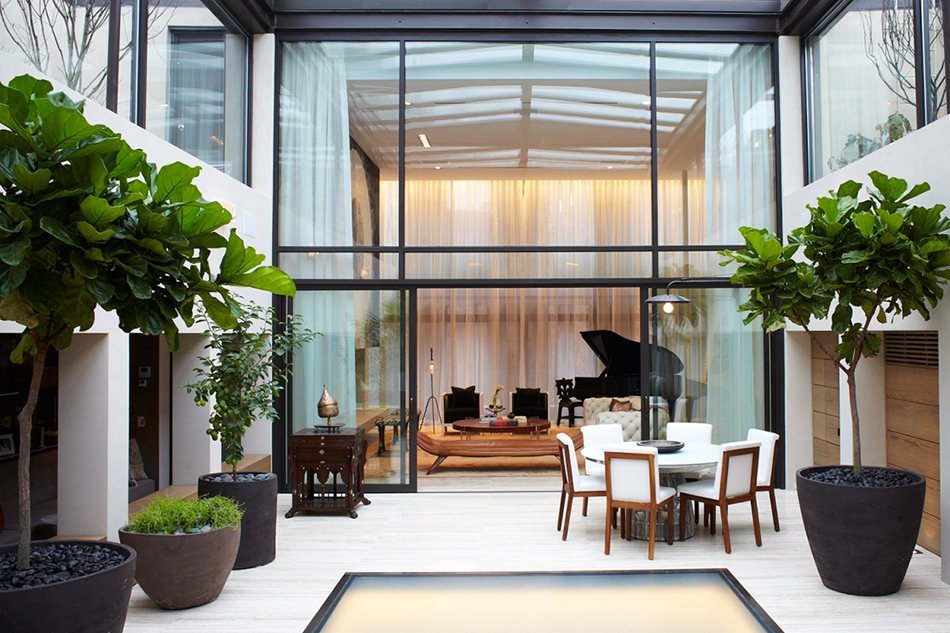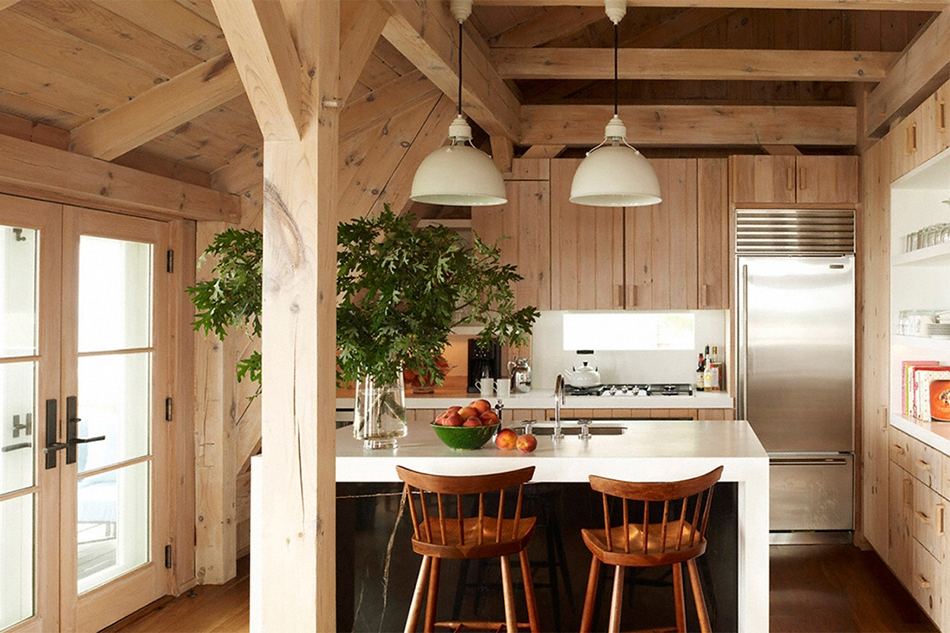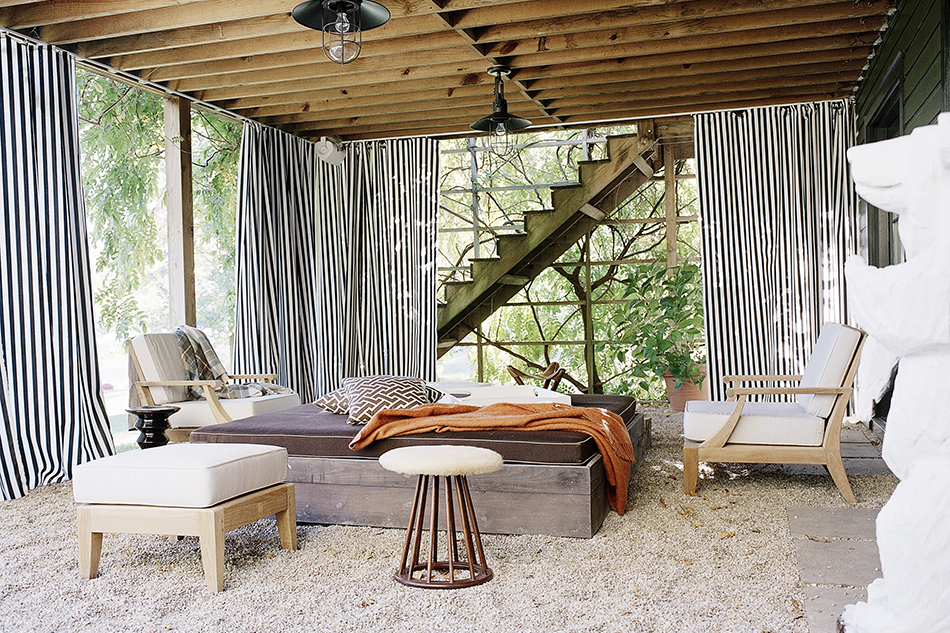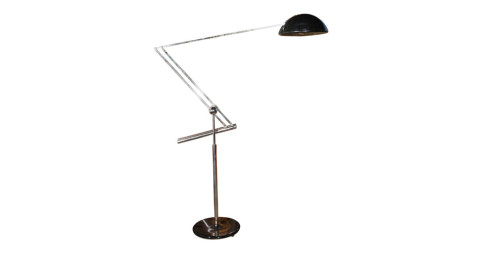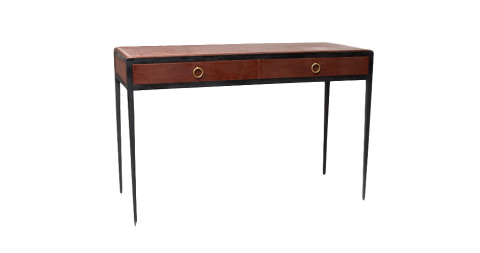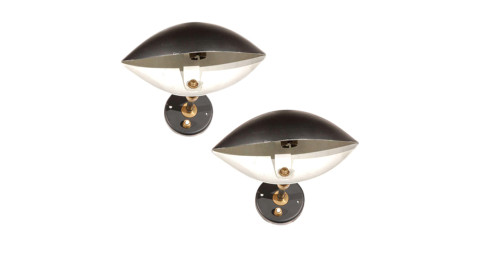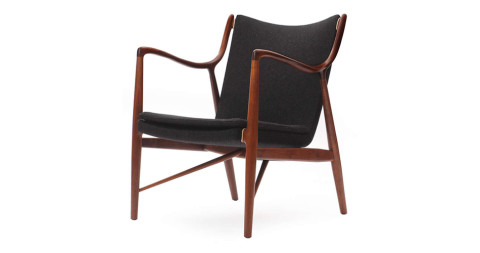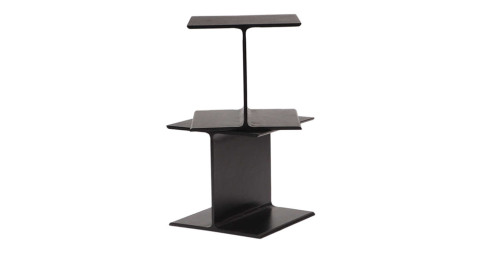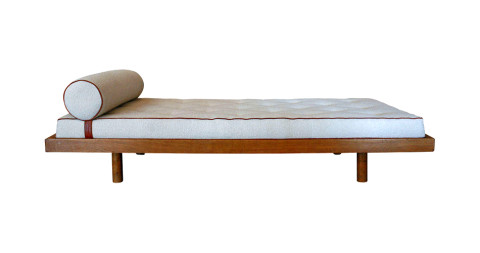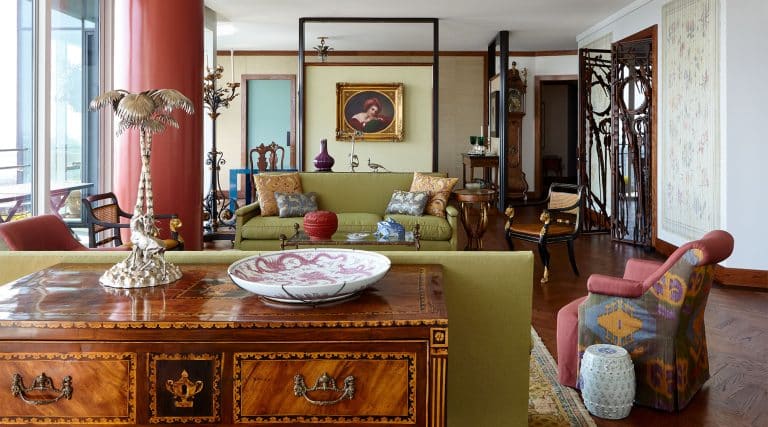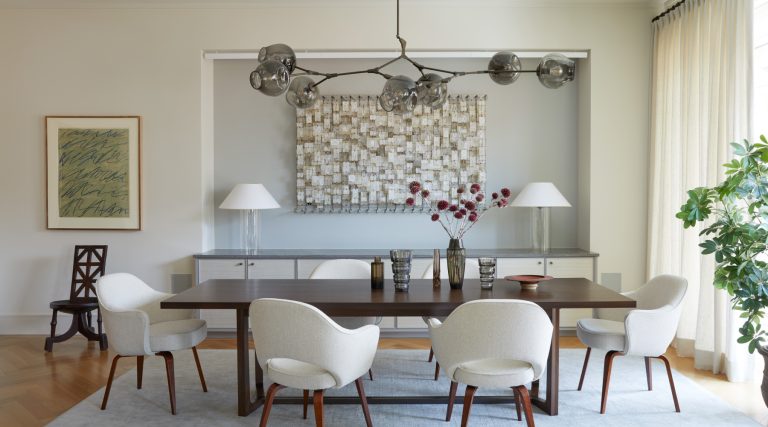
April 30, 2014Gray Davis, left, and Will Meyer, the principals of the New York–based design firm Meyer Davis, are behind some of the most exciting hotel and restaurant projects on the East Coast today, including The Nolitan (above), a boutique hotel in lower Manhattan that opened in 2011. All photos courtesy of Meyer Davis
It’s a cold November day in midtown Manhattan, but the lobby of the newly renovated Paramount Hotel feels cozy. Mid-century-inspired chairs are arranged in small, intimate vignettes. Near the front desk sits an 18-foot-long tufted ottoman in butterscotch leather on which at least a dozen people have flopped down, including a couple who appear to be napping. While waiting to meet Will Meyer and Gray Davis, the designers responsible for the hotel’s recent renovation, I sit on a banquette-like sofa admiring a fireplace outfitted with stainless steel fins that throw warm light out into the room. I’m told I will know them when I see them, and indeed, when they walk in — Meyer, boyishly handsome with expressive eyes, and Davis, over six feet tall with closely cropped, curly hair and thick-rimmed glasses — they stand out even among the stylish crowd.
The Paramount is just one of the many recent high-profile hotels for this under-the-radar design duo. (The real-estate mogul and megacollector Aby Rosen hired them when he purchased the property in 2011 from Ian Schrager, who’d famously worked on the project with Phillipe Starck.) Meanwhile, another New York heavyweight, Jonathan Tisch, tapped Meyer Davis to redo the Regency Bar & Grill, the signature restaurant (and long established Upper East Side “power breakfast” spot) of his Loews Regency Hotel, which reopened in January to much acclaim after a $100 million overhaul. (The firm also designed the hotel’s luxe Julien Farel Salon & Spa). And currently they’re working on a Miami hotel for Starwood founder Barry Sternlich. Taking over the former Gansevoort Hotel space, and expected to open later this year, the project will be one of the first launches from Sternlich’s new brand 1 Hotels & Homes.

A custom-designed light fixture hangs above an 18-foot-long tufted leather banquette in the lobby of New York City’s legendary Paramount Hotel, which underwent a $40 million renovation in 2013 that included a redesign by Meyer Davis.
And that’s just the hotels: the firm is behind the look of numerous talked-about restaurants, residences and retail shops as well.
After graduating from Auburn University’s architecture program in 1989, Davis, a Tennessee native, bought a one-way ticket to New York. He soon got a job with celebrated classical architect John Saladino, for whom he worked on headline-grabbing projects like the Four Seasons Hotel on 57th Street. Davis later moved on to Thomas O’Brien’s Aero Studios, where he had a hand in Giorgio Armani’s home and stores and found his love for American modernism. All the while, he stayed in touch with his former classmate Will Meyer, who was cutting his teeth at Gwathmey Siegel Architects, in New York, working on such projects as the Manhattan apartment of Steven Spielberg. The two friends began collaborating on freelance residential projects, beginning with Meyer’s grandparents’ lakeside weekend home in Tennessee, where Meyer also grew up — and by 1999, they had enough work to start their own firm.
Since then, Meyer Davis has grown to employ 24 people, all neatly fitted into a compact Soho office whose vibe is much like the designers themselves: unfussy, sophisticated and a touch serious. While they like to keep their plate balanced with residential projects — including the Hamptons home of furniture designer David Netto and the Manhattan loft of Christiane Lemieux, creative director of DwellStudio — Meyer and Davis are perhaps best known for their work in the hospitality and retail worlds. “What we’ve done, which I think people have really responded to, is bring a truly residential quality to hospitality,” says Davis. To date, they have completed five hotels (with another seven in various stages of completion) and more than two dozen restaurants.

Hospitality Design magazine has selected Atlanta’s St. Celicia as a finalist for its annual HD Awards for Best Restaurant Design in 2014.
As for retail, the firm designs all of Oscar de la Renta’s boutiques. They recently doubled the size of the brand’s Madison Avenue store and are now working on three new outposts in Riyadh, Moscow and St. Petersburg. “We took our inspiration from Oscar’s house in the Dominican Republic and used coral stone, bleached-out woods and light colors in the design,” explains Davis. The firm is also behind the John Varvatos boutiques in Miami, Las Vegas and New York’s Soho. For these, Meyer Davis recreated the rock-and-roll look of the Manhattan flagship store, which resides in the former home of the legendary music club CBGB on the Bowery.
Meyer and Davis have also worked with some of the biggest names in the restaurant industry, including Seamus Mullen, the New York chef whose Catalan-influenced dishes earned his West Village restaurant Tertulia a rave review from the New York Times. Of working with the firm on one of his previous restaurants, Soho’s Boqueria, Mullen recalls, “My partner and I wanted a restaurant that evoked the convivial dining culture of Spain. Will and Gray created a space that referenced it without being overly literal.”
For Harlow, a restaurant in the Lombardy Hotel on East 56th Street, the firm collaborated with Richie Notar, a veteran of Studio 54 and Nobu, to create a dramatically glitzy room, which since opening last spring has witnessed Madonna dance-offs and the glamorous premiere party for Blue Jasmine.
Davis and Meyer have also worked with celebrated chef Andrew Carmellini on the uberpopular Robert DeNiro-owned restaurant Locanda Verde, in New York’s Tribeca, and The Dutch in Miami Beach, as well as with restaurateur John McDonald on a number of projects, including the new Miami outpost of Lure Fishbar. “They take an idea that exists in my head and bring it to life,” says McDonald. “There’s something to be said for the fact that I keep coming back to them.”
In Atlanta, the duo also designed the fourth restaurant in chef Ford Fry’s rapidly expanding Southern-food empire, King + Duke, which opened last spring, as well as the fifth, the airy St. Cecilia, which brought the feel of the Italian Riviera to Buckhead when it opened in January.

“We believe in the area,” says Davis of Copake. “We’re putting our mark on it.” Another view of his house there shows a room framed by doors whose color is inspired by the painting above the desk by Tom Borgese, which he made after visiting the couple at the lake.
Meyer and Davis are both well spoken and mild-mannered in a Southern-gentleman kind of way, and, at this stage of working together, their partnership, as they describe it, is seamless. Like many designers, they also have a healthy appetite for personal projects on the side. “I don’t think you can do great work for your clients unless you’re doing work for yourself at the same time,” says Meyer, who recently bought a waterfront house with his wife, Kerstin, in Hamptons Springs, New York. Originally designed by Hugh Newell Jacobsen in 1971, the house now has a glass-enclosed kitchen of Meyer’s design. “Guys like Richard Meier and Jacobsen really established modernism in the Hamptons. I’m lucky to have one of the first great examples of that style.”
The way Meyer describes it, everything he knows about vacation homes, he’s learned from Davis. Fifteen years ago, while visiting friends, Davis and his partner, Chase Booth, bought an abandoned 1940s cabin on the shores of Copake Lake, in Columbia County, New York. “There were dead animals inside, and it was in really rough shape,” says Davis. But the couple restored the cottage, and it landed in House & Garden in 2004. They are currently building an Adirondack-style camp on an island in the middle of the lake, the third house they’ve built for themselves in the area. “It’s always nice to have these little projects going on outside of our client work,” says Davis, with the sheepish grin of a gambler whose addiction has been exposed.
Back at the Paramount, where we’ve moved to a second-floor nook overlooking the lobby, I ask the designing duo what it’s like to toggle between large-scale commercial projects and smaller residential ones. Meyer thoughtfully surveys the buzzing crowd below. “People need to feel like the things in their house represent who they are, the same way a hotel or a store needs to represent a concept or a feeling,” he muses. Ultimately, he says, “I would be bored if I did the same thing over and over again.” Without missing a beat, Davis adds, “And there’s nothing more satisfying than going from a supermodern glass house to a traditional Georgian house. It keeps things fresh.”

